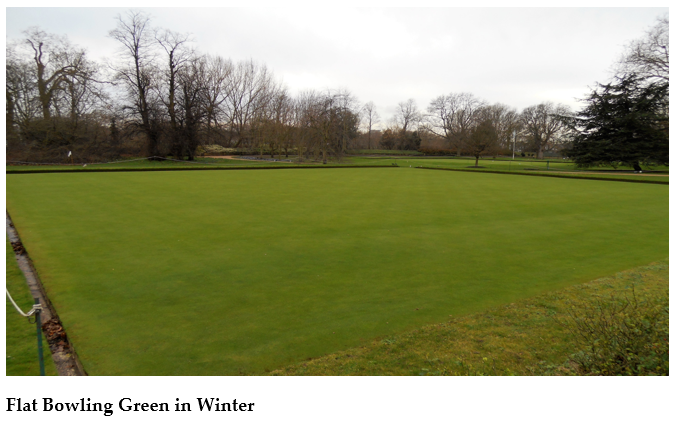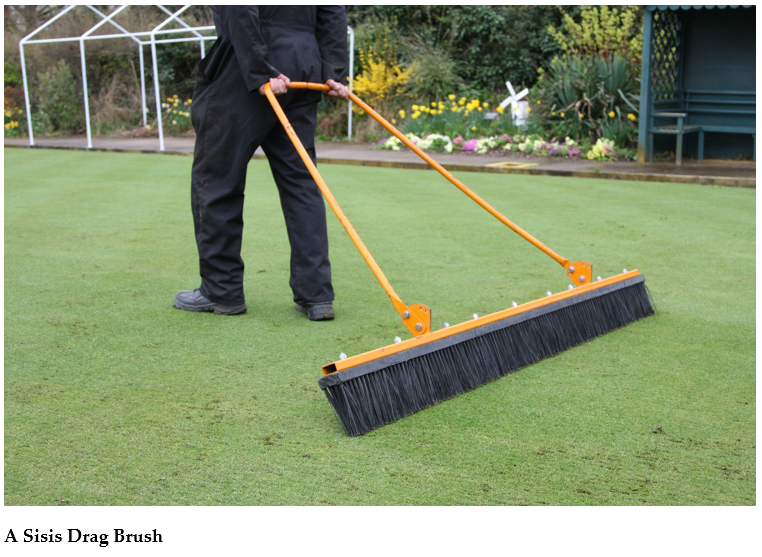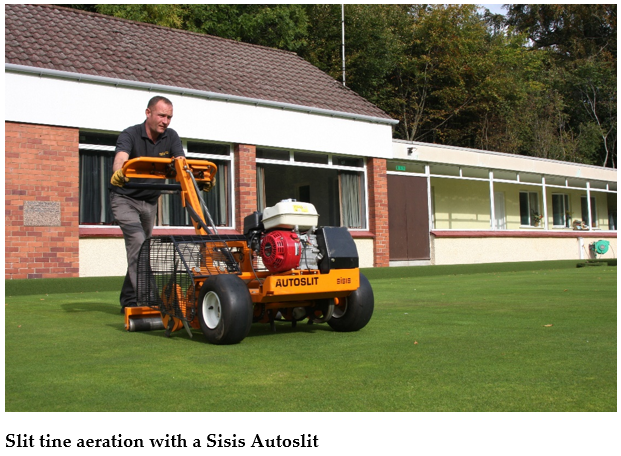Our specialist Greens Maintenance Advisor, Alan Lewis, shares his advice to ensure your green receives the required treatment this Winter.
I hope you have had a successful autumn renovation of the green.
If your renovation was late this year, the sward may be a little bit thin and if you used fescue and bent grasses, they can take up to 6 weeks to germinate and until we have a few colder nights the soil is still warm.
Do not sow new grass now, as it is too late.
‘Putting the surface to bed’ is an industry term you may hear because a lot of greenkeepers think that once they have completed their end of season renovations they have finished – far from it!
 The more work you manage to do on your green in autumn and winter the better your green will be next year/season.
The more work you manage to do on your green in autumn and winter the better your green will be next year/season.
Think about how often you have cut the green, how often you and players have walked on the green and how much soil compaction there is in your green. One aeration at the end of the season as part of the renovation is not enough. Start a regular aeration programme over the winter.
What are we looking to do now?
We need to get the young grasses established and it may also have been a number of weeks since you fed the green (always remember the standard granular feed will only last 6 weeks in the soil). Bowling greens are normally quite sandy so nutrients will wash or leach out of the soil and if the grass is still growing it will use some nutrients up, particularly nitrogen.
When your new grasses have established from the renovation and had its first cut you need to think about aerating the green and giving it a feed. Obtain some advice on feeding or follow a soil test. The grass needs help and it needs its nutrients. Autumn/winter feed is higher in Phosphate and Potash than it is in Nitrogen. Phosphate and Potash will help with root growth and plant health to see the grasses through the winter.
Walk your green regularly perhaps when removing leaves off the surface and keep an eye open for disease.
Think about the air-flow over your green, have you got fencing or conifers around the edge of the green? If you have, then this is stopping air flow. A good air flow will help dry your green out and help prevent disease. Use a drag brush to get the dew of the grass plant to avoid a wet leaf, which is one of the main reasons for disease.

*If you are going to cut the green then brush it first, have a cuppa and let the green dry and then cut the green. Why? – A dry leaf cuts better, giving a healthier plant.
Lift the height of cut to about 8 – 10mm. Why? – root growth is proportional to top growth so: more root growth = with a longer leaf the plant will produce more food itself = better root growth = the better your green will survive during the summer.
Just ‘top’ the green i.e. take the tip of the grass, this helps thicken the sward and develop root growth.
Think about getting your mower serviced. A blunt bottom blade or cylinder blades will tear the plant and could cause disease. Remember to cut the green the green when necessary and to vary the direction so as not to make ‘runs’ on the green.
So, Walk the green – keep an eye open for diseases. Brush the green. Cut the green.
Next step Aeration.
This is important for getting air into soil, improves root growth, moisture, and nutrients to get in and helps to produce a healthier plant.
Your soil profile will guide you as to what type of aeration and depth you require. As a guide, a standard solid 100mm tine is often the way to go. If you choose to use slit tines as your method then you must remember to stop in March so that the slits do not open up and affect the running of the wood if we have warm weather. If using solid tines these can be used right up to the start of the bowling season.

Try and aerate once a month but only when the surface is fit enough – avoid leaving machine marks on the green, which will produce runs the woods will follow next season,
If you have used hollow tines in your renovation, then check these as you may need to top dress again if the holes have not filled up.
Think about repairs that need doing to the green because the root is still warm early autumn and the turf will root back quickly.
Basic Guide:
- Brush the green
- Top the green at 8-10mm
- Aerate the green once/month with a standard solid tine (100mm/4”)
- Think about your feeding programme
- Keep an eye open for disease
If you struggle with a disease called Fusarium then try improving the air flown across the green by cutting the bottom of the hedges or adding some air bricks at the bottom of fences etc. However, some greens are prone to this disease and you may also need to consider getting professional advice and think about a preventative fungicide.
If you are planning ditch work ensure the turf is well established before lifting it from the edges.
Alan Lewis MSc NDT F inst G
Bowls England Greens Maintenance Advisor
The Bowls England Greens Maintenance Advisory Service provides FREE practical independent advice and assistance to affiliated clubs regarding all issues related to the bowling surface.
Alan will continue to provide regular updates for Clubs with advice on green management. To receive direct to your inbox, sign up to our e-newsletter here.
